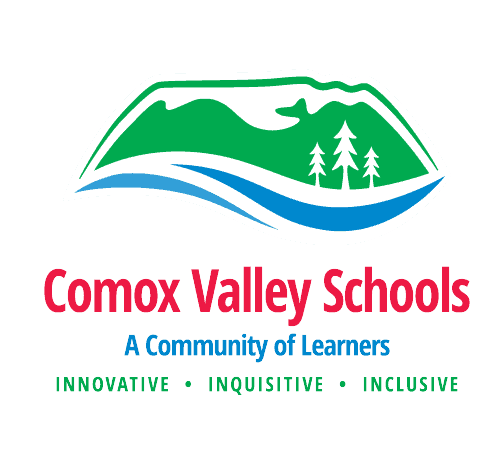Talking Circle
Talking Circles Explanation
Circles are a traditional First Nations format for discussion and decision making. There are different types of discussion circles, such as Talking Circle, Sharing Circles, or Healing Circles, and the protocols for usage depend on the purpose. The term Talking Circle is sometimes used interchangeably with Sharing Circle. Definitions of these terms may differ depending on the context of the user.
It is important to understand that the type of discussion circles generally used in classrooms are not intended to be used for any therapeutic purpose. Classroom-based Talking or Sharing Circles are not Healing Circles (the latter needing to be facilitated by skilled leaders in specific contexts, and in First Nations contexts, often include additional cultural protocols).
Talking Circles in classrooms are usually used to demonstrate that everyone is connected and that every person in the circle has an equal voice. They also ensure that everyone can see and hear the speaker. Read the rest of the article below for a good description of talking circles in classrooms.
Excerpt from page 19-20 of the FNESC/FNSA: BC First Nation Land, Title, and Governance Teacher Resource Guide
Talking Circles Explanation FNESC
Also see more on the following website: First Nations Pedagogy Online
Talking Circles
Talking circles is an excellent teaching strategy which is consistent with Indigenous values and is an important part of the oral tradition.
Talking circles can help with classroom communication and can be used in a number of different subject areas, and become the focal point of your classrom. These lessons can focus on identity, social and mental health, oral language learning utcomes or can be used in conjunction with any subject area.
Knowledge Keeper Evleyn Voyageur Talking Circles
Knowledge Keeper Evelyn Voyaguer Biography
How to get started:
We make sure to mention that this book is one general way that is attributed to some indigenous people.
There are so many ways to incorporate Talking Circles into your lessons!
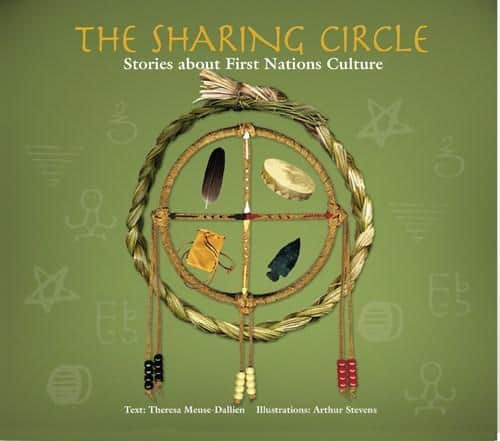
To start, we often begin with asking students, What is important about communication in a classroom and in a community? Students list all the norms they have in the class i.e. listening to the speaker, taking turns, participating in a discussion. Then we share the story, Talking Circle on page 31 in the following book, The Sharing Circle, for ideas on how a talking circle begins and works. We make sure to mention that this is one general way that is attributed to some Aboriginal people.
In the book, they pass the item to the left, but we follow the protocols of the territory we live on the eastcoast of Vancouver Island. Here people rotate with the moon and therefore pass to the right or counter clockwise.
The method we use in schools is a combination or blend of the basic principles of different ideas from various Indigenous groups. The idea is that everyone is heard and has a chance to share – a fair communication system. It is not the only way.
We then co-construct some criteria together about what a talking circle entails and practiced a simple circle, asking and modeling students to say their name, their relatives and ancestors names, and something about themselves. The students then completed a response sheet. See examples below.
Learning Intentions:
- I can be a good listener and help to create a positive community in my classroom.
- I can understand how talking circles and a talking stick were traditionally used and why they can be helpful.
- I can speak from the heart and be truthful and caring toward others.
Lesson Series:
Lessons can be done is a series or as stand-alone to help build Community in the Classroom and Improve Oral Language Skills
- Co-constructing Criteria for purpose and practicing a talking circle:
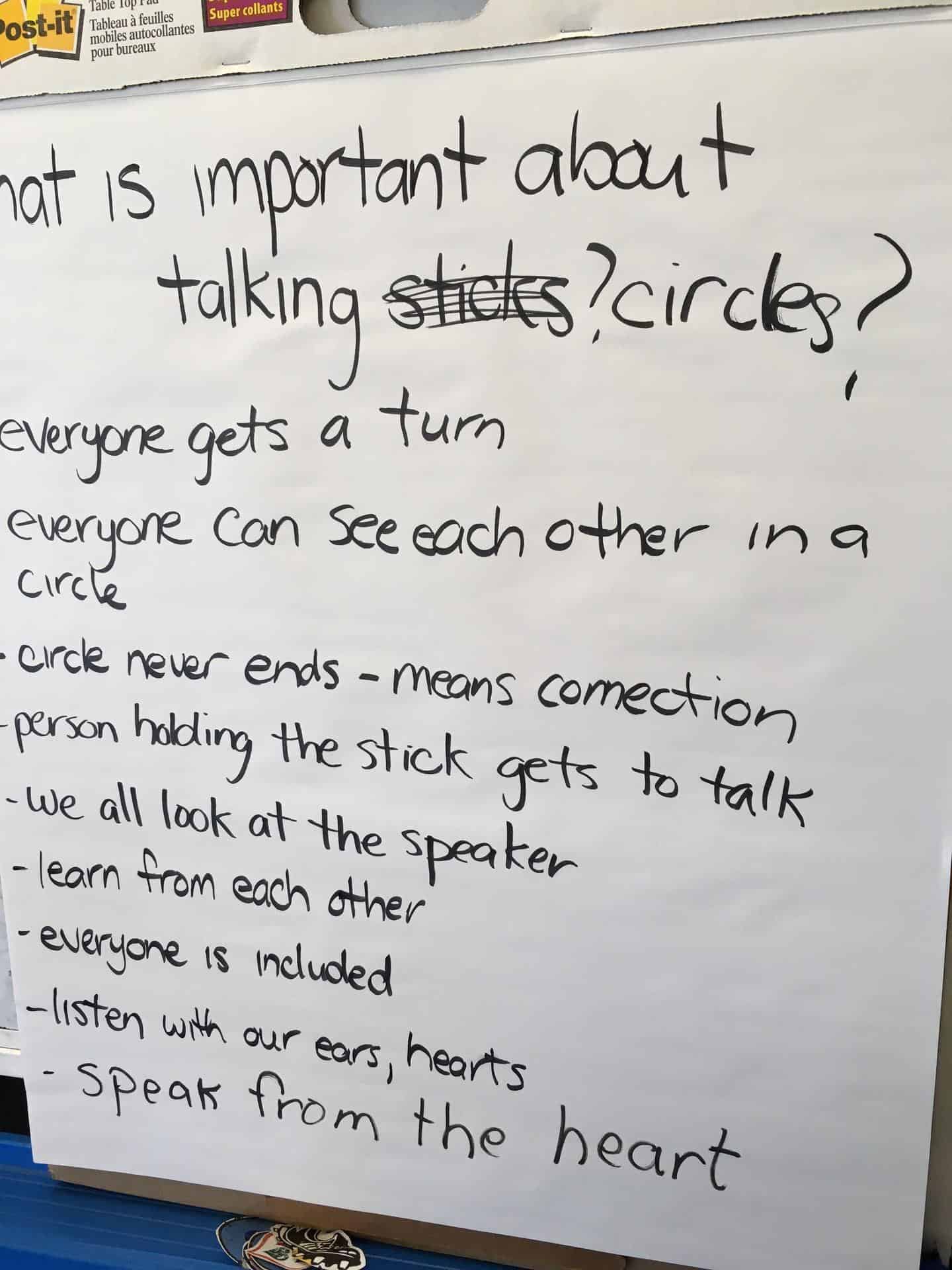
Response Sheets
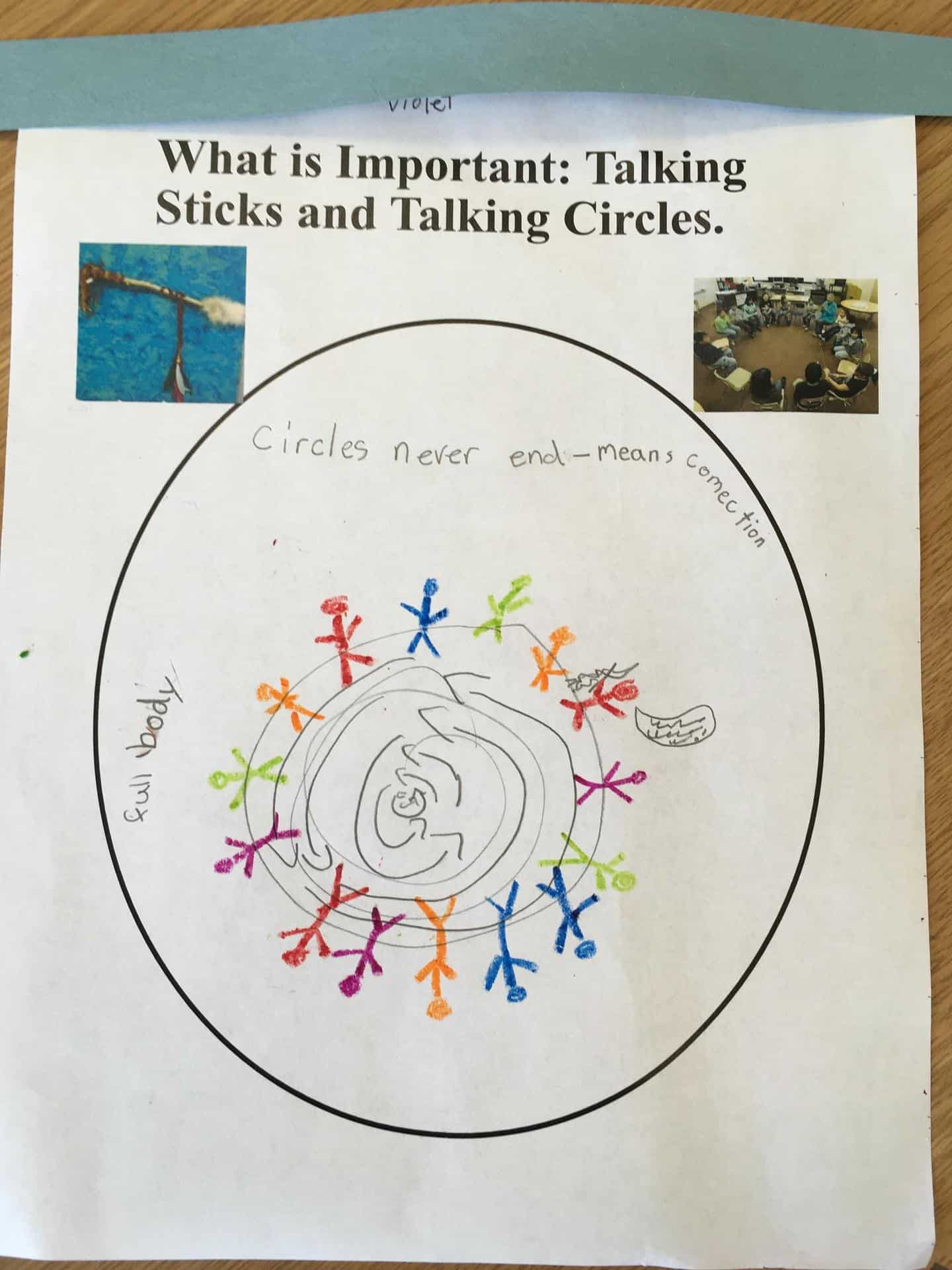
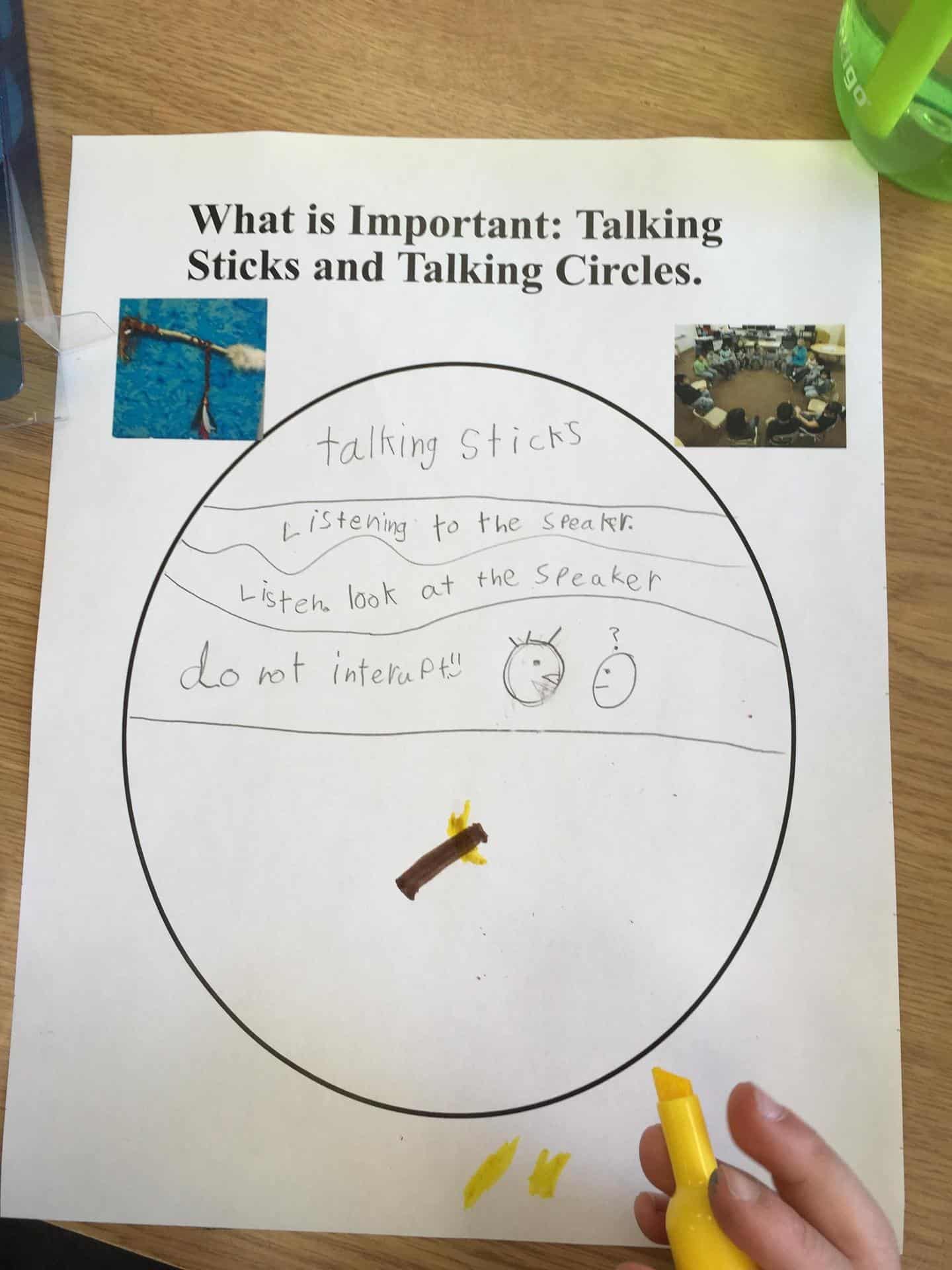
Lesson Ideas for a Talking Circle
- Talking Circles Lesson Using Stories (How to Be a Good Friend, how to identify my characteristics)

